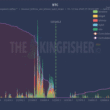Plasma is on track to debut its new blockchain, purpose-built for stablecoins, aiming for a mainnet launch by late summer. With a singular focus on stablecoin efficiency, the team is attracting major industry attention—and significant funding—as the race to capture the stablecoin market intensifies.
Stablecoin-First Blockchain Targeted for Summer Release
Plasma, a London-based blockchain company led by CEO Paul Faecks, is preparing to launch its mainnet by the end of summer, purposefully engineered to support leading stablecoins at inception. Faecks emphasizes that every decision, from technology to compliance, centers on making Plasma the most effective platform for stablecoin transactions. Unlike more general-use blockchains, Plasma’s architecture and liquidity strategies are specifically designed for this use case, granting it what Faecks calls a unique advantage in the growing stablecoin ecosystem. The mainnet launch is scheduled after a planned public pre-sale, which will open no less than 40 days ahead of the anticipated rollout, with regulatory-compliant restrictions—especially for U.S. participants, who will face a 12-month token lock-up extending beyond the mainnet’s debut.
Tech Innovation and Regulatory Compliance at the Core
The Plasma blockchain will launch as an EVM-compatible Bitcoin sidechain, optimizing operations for stablecoin transactions with features like zero gas fees. In parallel, the team is developing regulatory-compliant solutions for privacy-centric stablecoin transfers, such as private USDT transactions, reflecting the company’s drive to integrate with global payment systems while adhering to evolving legal frameworks. The upcoming XPL token pre-sale recently attracted $1 billion in preliminary deposits and follows $24 million in combined funding from industry heavyweights including Tether CEO Paolo Ardoino, PayPal co-founder Peter Thiel, and notable investment groups. Founders Fund, Thiel’s VC firm, also contributed a strategic investment at a $500 million fully diluted valuation.
Key Stats & Figures
- Mainnet Launch Timeline: Expected by late summer 2024, with public pre-sale commencing at least 40 days prior (latest by August 13).
- Stablecoin Market Size: Total stablecoin capitalization exceeds $251.74 billion, with USDT dominating on Tron and Ethereum networks.
- Funding Secured: $24 million raised in Seed and Series A rounds; $1 billion in deposits for XPL pre-sale; valuation at $500 million FDV.
- Team and Location: 27 team members headquartered in London, focused exclusively on stablecoin-related blockchain advancements.
Rising Institutional and Corporate Interest in Stablecoins
Plasma’s tailored approach to blockchain payments has sparked conversations with a broad array of companies across the traditional financial sector, payment processors, stablecoin issuers, and major corporates. While Faecks declined to reveal names, he confirmed that “dozens” of firms—from legacy institutions to retail giants like Walmart and Amazon—are exploring stablecoin issuance and payment integration. The push comes amid developments such as the Circle IPO and new stablecoin-focused legislation, all fueling broader adoption beyond the crypto-native world.
Conclusion: What This Means for the Market
As regulatory frameworks evolve and institutional players deepen their involvement, Plasma’s stablecoin-oriented blockchain is poised to reshape the payments landscape. By honing in on compliance, deep integrations, and network effect advantages, Plasma aims to become a market leader—though, as CEO Faecks cautions, only a handful of stablecoins are likely to achieve true global scale. The coming months will be crucial, not just for Plasma, but for the stablecoin sector as mainstream demand and legislative clarity converge.
